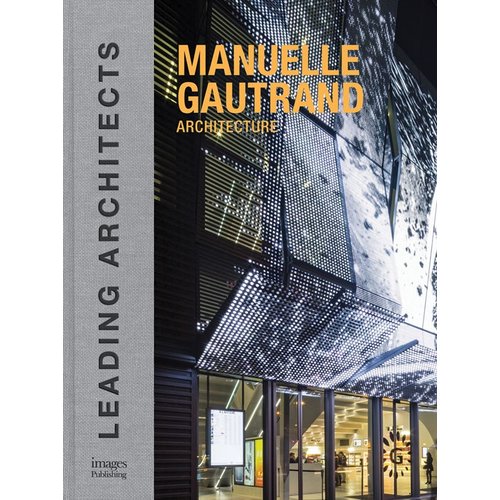Urban Futures

Collage by Stephen Gray, associate professor of urban design at Harvard Graduate School of Design, for “Boston: Race and Space, Urban Intermedia—A Harvard-Mellon Urban Initiative,” 2019.
With the national economic output back to its prepandemic numbers and unemployment down to 5.9 percent, cities have begun to quash the doomsday predictions of their demise. Yet they are changing, as they always do, after prolonged disruptions to their citizens’ daily habits and the overall shifting of America’s economy.
This issue of RECORD is dedicated to reimagining the post-Covid city, and the opportunities that come with addressing a host of challenges that faced cities long before the first patient came down with the coronavirus—from the crisis in affordable housing to traffic congestion and mobility—and the inequality of access to health care, education, and public space that remain embedded in urban life. In New York, Los Angeles, Miami, New Orleans, and Chicago, there is hope for a better, more sustainable, and more equitable future.
But we urgently need to put that idealistic promise into practice, or the new normal will be worse than the old one. As we know, Covid has not been an equal-opportunity scourge, in terms of health and welfare. Low-wage earners account for 52 percent of those displaced from jobs, as mid- or high-wage earners recover more quickly from layoffs. Eviction moratoria are expiring in piecemeal fashion, and yet housing prices rose 14.9 percent in the year up to June 2021 (see “Why is the Housing Market Insane?” page 80 ) in the 20 cities tracked by the Case-Shiller Index. Almost every major metropolis is seeing a rise in violent crime. And people seem to be driving as much as ever—used-car prices jumped 45 percent over the past year, while public-transit ridership remained down an average of 57 percent in the first quarter of 2021.
While the Delta variant reminds us that we are not out of this crisis, it is not too early for cities to devise responses to the severe social and structural problems that Covid exposed. Survival of the City: Living and Thriving in an Age of Isolation, a book by two Harvard economists, Edward Glaeser and David Cutler, offers an agenda-setting appraisal of the past 18 months’ impact on the future of cities.
Informed by a fascinating history of previous pandemics, the authors contend that urban survival will hinge on solving cities’ fundamental problems of education and safety, with an added challenge to address pandemic preparedness. This approach makes plenty of sense, like an urban version of pyschologist Abraham Maslow’s “hierarchy of needs.” Before we fret over ways to turn downtown office buildings into housing, for example, shouldn’t we actually build a better public health system, public schools that finally tackle inequalities, and more just and effective policing?
Even when Covid doesn’t kill people, it can leave victims debilitated over the long term, along with the institutions and agencies that support them. The authors aren’t that worried that cities will die because of a loss of population to the suburbs or receiving lower revenue from fewer daily commuters but, rather, that they could be hobbled by bad policy decisions.
Even in New York, where 18.7 percent of Manhattan’s office space was vacant as of July—the highest percentage on record—the authors maintain that the effects of remote work will be “marginal.” They note that premature projections of urban demise were often incorrect, such as in Alvin Toffler’s 1980 book, The Third Wave, where Toffler correctly foresaw that computers would revolutionize the global economy but was wrong in postulating that they would leave downtown office towers empty (not true until a pandemic struck). Glaeser, the author of Triumph of the City—a paean to the unparalleled innovation and culture that only dense places can provide—says in an interview, “Cities that were doing well before the pandemic will be fine.”
But what Glaeser and Cutler worry about most in Survival is that the pandemic will widen the gap between the haves and have-nots. “Before 2020, our cities flourished as enclaves for the wealthy, but they were failing in their great mission of turning poor children into prosperous adults,” they write. They see urban agglomerations as increasingly protective of “insiders” — homeowners, incumbent businesses, city agencies—at the expense of outsiders like young people, immigrants, entrepreneurs, and renters. This current lack of opportunity is the threat that should demand our attention and action.
In the book’s introduction, Glaeser and Cutler divulge their political leanings: Glaeser calls himself a “traditional East Coast Republican,” while Cutler worked in the Clinton administration and on the Obama campaign. These backgrounds inform their appealingly nonideological approach to solving inequity. In some instances, they want the market to drive—they propose reforming cities’ zoning and permit processes that are high hurdles to building housing or starting new brick-and-mortar businesses. The physical world is much more tightly regulated, with licenses and inspections, than the virtual one, making it much harder to launch a new store or café than to create an online business. And yet retail entrepreneurship is more accessible to those with lower levels of education. “Only 5 percent of high school dropouts were able to work remotely,” says Glaeser. “If you’re going to regulate one sector and not the other, you’re offering a huge benefit to one group,” he adds. Cities need vibrant new in-person businesses across price points in order to rebound.
In other cases, local policy reform isn’t enough, and a big-government approach will be necessary. The two authors call for a well-funded national “Apollo program for opportunity” to address persistent urban poverty. Part of this vision requires improving schools, but that “is incredibly hard,” Glaeser admits. Past attempts, such as the Obama-era Race to the Top— “a brilliant piece of management-consulting design,” Glaeser says—was a competitive process that linked federal funding to excellent school performance. “And yet it [ran] up against the fact that schools have no capacity to adapt to a new set of standards without funding.”
Significantly, the authors suggest augmenting improved traditional learning with job training. Glaeser says these programs, which could supplement school in the afternoon, on weekends, or during the summer, could provide a more direct pathway to employment if done in conjunction with unions or companies that train people specifically in everything from carpentry to computer skills. Such programs, Glaeser points out, will “deliver skills that are actually valued by the workplace.” He adds, “And you can measure them at completion. You can pay for performance.”
A final plank of their platform to address inequality is improving public safety. Rather than reduce police budgets, they call for enough money to implement community-led policing, violence-diversion programs, and neighborhood amenities in high-poverty areas—ideas that have worked in some neighborhoods in Chicago and New York. All of this will require leadership adept at change management, and the authors suggest adopting a system of metrics that measure not just how much the police reduce crime, but also whether the people with whom they interact are treated with dignity and respect.
Public education and safety are not new urban challenges, but in the wake of the protests after George Floyd’s murder and the miserable school year, when shutdowns cut across demographics, “There may be a new impetus to solve them,” Cutler says. “We are only as healthy as the least healthy among us,” he adds, with the pandemic demonstrating that our own well-being is highly interdependent on the public at large.
To prepare for the next pandemic, Glaeser and Cutler envision a NATO-inspired global health agency that would both provide aid to build cities’ public-health infrastructure and deliver data and analysis about outbreaks. After so many years of pitting cities and countries against one another, this agency would bring about a new system of cooperation to ensure mutual health and safety.
As the authors note, “Humanity crafted itself an urban world because proximity is valuable.” But as economists, they know there is a cost–benefit analysis to just how valuable city living is. Over the past few decades, most of the benefits of cities—culture and restaurants, good jobs and housing—accrued to the wealthiest. Now it is clearer than ever that, unless we improve health, safety, and education for everyone, inequity and inequality is going to cost us all.




